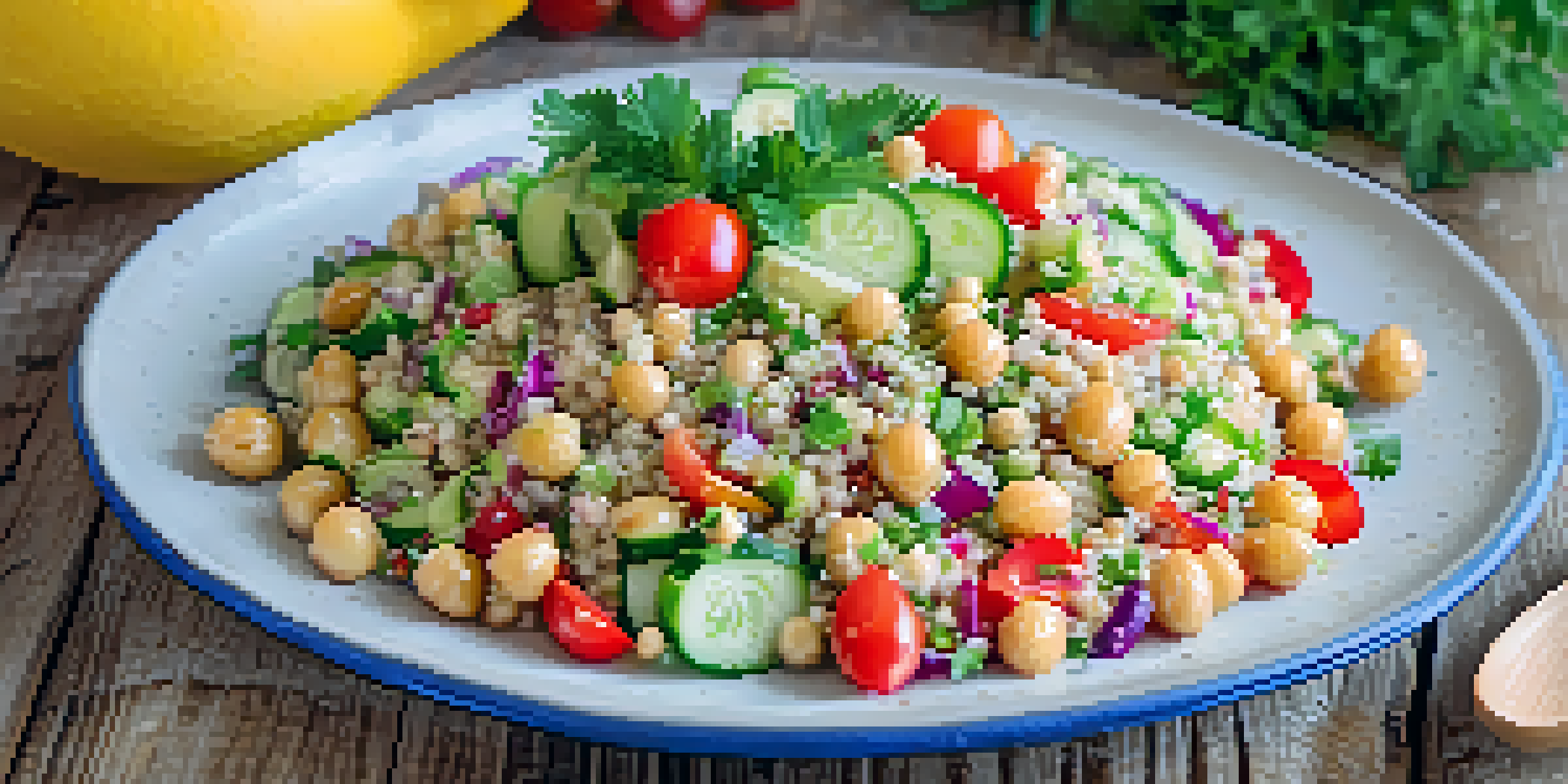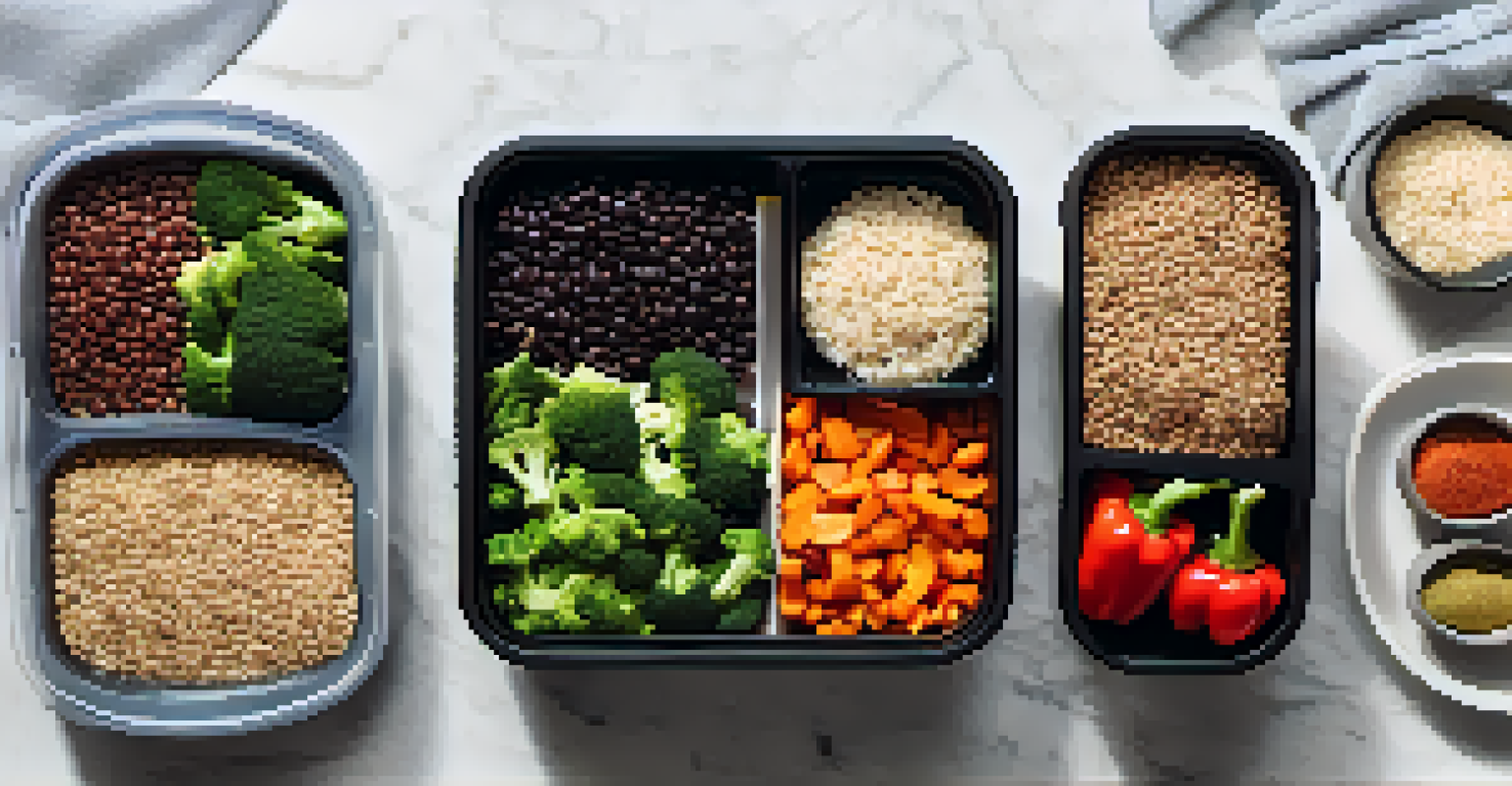Combining Legumes and Grains for Complete Protein Benefits

Understanding Protein: What Makes It Complete?
Proteins are essential for our body, serving as the building blocks for muscles, skin, and enzymes. A complete protein contains all nine essential amino acids that our bodies can't produce on their own. These amino acids are crucial for various bodily functions, including immune response and hormonal balance. Understanding this will help you appreciate the importance of getting complete proteins in your diet.
Let food be thy medicine and medicine be thy food.
While animal sources like meat and dairy are rich in complete proteins, many plant-based foods tend to be incomplete. For instance, grains generally lack sufficient lysine, while legumes often fall short in methionine. However, by combining these two food groups, you can create a meal that provides all the essential amino acids your body craves. This is a game changer, especially for vegetarians and vegans looking to meet their protein needs.
So, how do you ensure you're getting complete proteins in your meals? It's all about pairing the right foods. Think of it as a culinary duet: legumes and grains can come together to create a harmonious blend that fulfills your nutritional requirements. Now, let’s explore some practical ways to combine these foods!
The Nutritional Power of Legumes
Legumes, including beans, lentils, and chickpeas, are nutritional powerhouses. They are high in protein, fiber, vitamins, and minerals, making them an excellent choice for anyone looking to boost their diet. For example, a cup of cooked lentils contains about 18 grams of protein and provides a significant amount of iron, which is vital for energy production.

Additionally, legumes have a low glycemic index, which means they release glucose slowly into the bloodstream. This helps stabilize blood sugar levels, making them particularly beneficial for individuals with diabetes or those looking to manage their weight. The fiber in legumes also promotes digestive health, keeping you feeling full and satisfied longer.
Complete Proteins for Optimal Health
Combining legumes and grains provides all essential amino acids, ensuring a complete protein profile for better health.
Incorporating legumes into your meals can be as simple as adding them to soups, salads, or even blending them into dips like hummus. By doing so, you not only enhance the nutritional value of your meals but also introduce a variety of flavors and textures that can make eating healthy exciting.
Why Grains Are Essential for Your Diet
Grains, particularly whole grains, are another crucial component of a balanced diet. They provide carbohydrates, which serve as the primary energy source for our bodies. Whole grains like quinoa, brown rice, and whole wheat also pack a punch with essential nutrients, including B vitamins, iron, and magnesium.
You are what you eat, so don't be fast, cheap, easy, or fake.
Moreover, grains contribute to your overall fiber intake, which is important for maintaining digestive health and regulating cholesterol levels. A diet rich in whole grains has been linked to a lower risk of heart disease and certain cancers. Plus, their versatility makes them easy to incorporate into almost any meal, whether as a base for a bowl or a side dish.
When paired with legumes, grains not only enhance the protein profile of your meal but also provide a broader range of nutrients. The combination elevates the meal's flavor and texture, making it more enjoyable and satisfying. Let’s look at some delicious pairings that showcase this synergy.
Perfect Pairings: Popular Legume and Grain Combinations
Some classic pairings of legumes and grains include rice and beans, lentils and barley, or chickpeas with quinoa. These combinations not only offer a complete protein profile but also create a satisfying meal that is rich in flavor and texture. For instance, a hearty bowl of chili made with kidney beans and served over brown rice is both comforting and nutritious.
Another delicious example is a Mediterranean salad featuring quinoa, chickpeas, and fresh vegetables, drizzled with a lemon-tahini dressing. This dish is not only packed with protein but also bursting with fresh flavors, making it a perfect lunch option. The key is to experiment with different flavors and textures to find combinations that you love.
Nutritional Benefits of Legumes
Legumes are packed with protein, fiber, and essential nutrients, making them a powerhouse for maintaining energy and digestive health.
Don't shy away from trying new recipes or cuisines that naturally incorporate legumes and grains. Dishes from various cultures, such as Indian dal with rice or Mexican burritos with black beans and brown rice, highlight the benefits of these two food groups beautifully.
Cooking Tips for Legumes and Grains
Cooking legumes and grains can be simple and rewarding. Start by soaking your legumes overnight to reduce cooking time and enhance digestibility. For grains, rinsing them before cooking can help remove excess starch, leading to a fluffier texture. A general rule of thumb is to use three cups of water for every cup of grains, but always check specific cooking instructions for the best results.
Using a pressure cooker or slow cooker can also make the process easier, especially for legumes, allowing you to prepare larger batches that you can use throughout the week. This not only saves time but also ensures you always have healthy options readily available. Additionally, consider cooking grains in vegetable or chicken broth for added flavor.
Finally, don't be afraid to get creative! Experiment with spices and herbs to enhance the flavor of your dishes. Adding garlic, onion, or even a splash of soy sauce can elevate a simple grain or legume dish into something extraordinary.
Health Benefits of Combining Legumes and Grains
Combining legumes and grains offers a plethora of health benefits. This powerful duo not only ensures you consume complete proteins but also enhances overall nutrient intake. For example, the fiber content from both food groups aids in digestion and helps maintain a healthy weight, making this combination ideal for those looking to improve their overall health.
Research suggests that diets rich in legumes and whole grains can lower the risk of chronic diseases, such as heart disease and diabetes. The antioxidants found in these foods also play a role in reducing inflammation and supporting overall health. When you make a habit of incorporating these foods into your meals, you’re setting yourself up for long-term health benefits.
Versatile Grains Enhance Meals
Whole grains add carbohydrates and important nutrients to your diet, while their versatility pairs well with legumes for satisfying dishes.
Moreover, this combination is budget-friendly, making healthy eating accessible for everyone. With legumes and grains being cost-effective sources of nutrition, you can eat well without breaking the bank. It’s a win-win situation!
Incorporating Legumes and Grains into Your Lifestyle
Incorporating legumes and grains into your daily diet can be a fun and creative endeavor. Start by planning your meals around these foods, whether that means making a weekly batch of lentil soup or preparing a grain bowl for lunch. The key is to keep it simple and enjoyable, allowing you to discover new flavors along the way.
You could also try themed nights, such as Taco Tuesday with black beans and brown rice or Meatless Monday featuring a hearty lentil stew. Involving family or friends in meal preparation can make it even more enjoyable and encourage everyone to explore the benefits of these nutritious foods together.

Ultimately, the goal is to build a sustainable eating pattern that includes a variety of legumes and grains. By experimenting with different recipes and combinations, you’ll not only reap the protein benefits but also cultivate a love for healthy eating that lasts a lifetime.